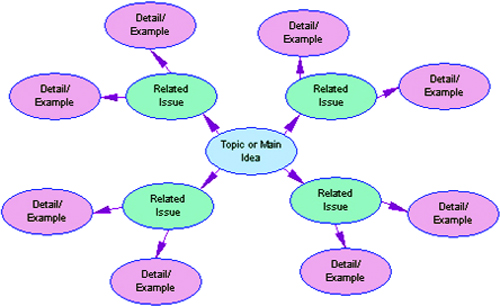Yogesh Katyal
Used as a learning and teaching technique, Concept Mapping visually illustrates the relationships between concepts and ideas.Often representsed in circles or boxes, concepts are linked by words or phrases that explain the connection between the ideas, helping students to organise and structure their thoughts to further understand information and discover new relationships. Most concept maps represent a hierarchical structure with the overall, broad concept first with connected sub-topics, more specific concepts, following. A concept map is a type of graphic organizer used to help students organize and represent knowledge of a subject. Concept maps begin with a main idea (or concept) and then branch out to show how that main idea can be broken down into specific topics.
Concept mapping serves several purposes for learners:
Helping students brainstorm and generate new ideas.
Encouraging students to discover new concepts and the propositions that connect them.
Allowing students to more clearly communicate ideas, thoughts and information.
Helping students integrate new concepts with older concepts.
Enabling students to gain enhanced knowledge of any topic and evaluate the information.
Concept maps are typically hierarchical, with the subordinate concepts stemming from the main concept or idea. This type of graphic organizer however, always allows change and new concepts to be added.Concept positions on a map can continuously change, while always maintaining the same relationship with the other ideas on the map. A helpful way to determine the context of your concept map is to choose a focus question—something that needs to be solved or a conclusion that needs to be reached. Once a topic or question is decided on, that will help with the hierarchical structure of the concept map.Find the key concepts that connect and relate to your main idea and rank them; most general, inclusive concepts come first, then link to smaller, more specific concepts.Once the basic links between the concepts are created, add cross-links, which connect concepts in different areas of the map, to further illustrate the relationships and strengthen student’s understanding and knowledge on the topic. When created correctly and thoroughly, concept mapping is a powerful way for students to reach high levels of cognitive performance.
A concept map is also not just a learning tool, but an ideal evaluation tool for educators measuring the growth of and assessing student learning. As students create concept maps, they reiterate ideas using their own words and help identify incorrect ideas and concepts; educators are able to see what students do not understand, providing an accurate, objective way to evaluate areas in which students do not yet grasp concepts fully.
Inspiration Software, Inspiration, Kidspiration and Webspiration Classroom service, all contain Diagram Views that makes it easy for students to create concept maps; students are able to add new concepts and links as they see fit. Inspiration, Kidspiration and Webspiration Classroom also come with a variety of concept map examples, templates and lesson plans to show how concept mapping and the use of other graphic organizers can easily be integrated into the curriculum to enhance learning, comprehension and writing skills.s


